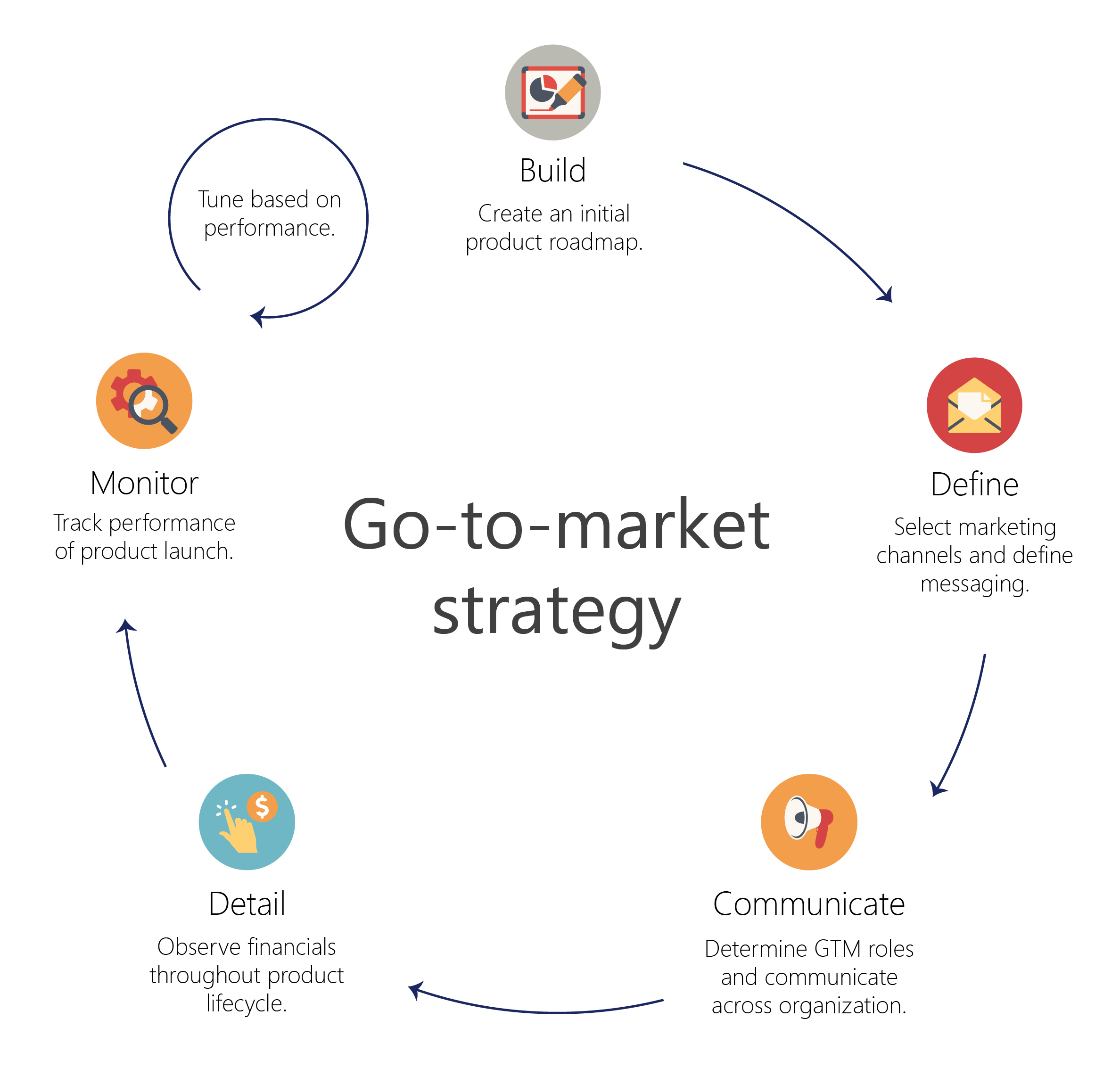Remember the domestic vacuum market before robot vacuums came along? For decades, vacuums were attempting to innovate their market by adding new features to the same human-operated machines or making them sleeker or improving the suction. Then iRobot came along and disrupted everything when it introduced the Roomba robot vacuum to the market. The demand for these little, autonomous domestic assistants soared and had the traditional vacuum producers scrambling to compete. Market disruptors, like the Roomba, seem to come out of nowhere to revolutionize the markets, but these products usually arise from a deliberate product innovation strategy that includes a well-developed understanding of a market and its target customers and a plan to match the right technological solution to the unfulfilled needs of the customers. This plan is called the go-to-market strategy.
Go-to-market strategy
The go-to-market strategy is an important component of a successful overall product innovation development plan. Before creating a go-to-market strategy, first determine market opportunity by building and analyzing market models. Next, define the target market and understand the intricate needs and behaviors of those customers with customer segmentation methods. Once those steps have concluded that a product is viable and has value to customers, it is time to build the strategy for bringing that product into the market. The goal of the go-to-market strategy is to capture the market that the market-sizing efforts identified while focusing the right features to the right audiences in a way that creates momentum and interest. The strategy should detail the plan for bringing a product or service to the market while maximizing market penetration, revenue, and profit. The strategy should also include a long-term product plan that specifies the roles and expectations of all aspects of a business in order to meet expectations.

For a successful go-to-market strategy, it is important to build a complete plan that takes into consideration all aspects of a business.
Build a product roadmap
This roadmap should detail the entire lifecycle of the product or service from market entrance through exit. This is an initial, high-level overview and timeline of how the product will evolve over time and includes all expected future product releases. The roadmap may also specify how and when certain product variations or features target certain customer groups. Keep in mind that this roadmap will adjust overtime as changes occur due to competition, customer feedback, etc.
Define marketing channels
Use the customer data from the customer segmentation phase to determine the optimal marketing plan for building and maintaining buzz about the product. Take into consideration the type of marketing channels preferred by the target customers and the type of messaging they want to hear.
Communicate organizational workflow
The go-to-market strategy should also include details about how a company will function internally to ensure product success. Define the role each department plays in moving the product into the market and through its lifecycle. Each group should have clear expectations and deliverables, and everyone should understand how marketing, finance, operations, sales, management, IT, R&D, etc. work together in a cohesive fashion and towards a common goal.
Detail Financials
For the go-to-market strategy, it is essential to know the ROI for every dollar spent in product innovation and development. Monitoring this ratio during the product lifecycle will not only reveal the financial health of the product, but also determine future ability to invest in further innovations.
Monitor and analyze product
As soon as a product hits the market, it is important to constantly monitor performance. Gather and analyze user feedback to determine how to improve the product and/or the marketing plan. Keep a close eye on the competition and the market as a whole and adjust your dynamic market model. Use all of these observations to adjust the product roadmap, modify sales and marketing plans, and research innovative features or new product ideas. There should be a constant cyclical loop of feedback into product development.
Evolve the go-to-market strategy
Adjustments to the go-to-market strategy will be made over time, depending on successes, failures, new market data captured and plugged into your dynamic market model, and customer feedback. For example, iRobot initially tested the market with 15,000 Roomba units with plans to release another 10,000 if the product was successful. The popularity exceeded expectations and the company adjusted the second release to 50,000 units. Then competition began to emerge and iRobot had to again adjust the product plan and choose how to further evolve the product to compete. It is important to build a flexible strategy that can easily respond to market changes.
Typically, the products that fail come from the companies that don’t continue innovate. New products are only new for a hot second before something else comes along to steal the spotlight. With today’s fast-paced technological changes and fierce competition across all markets, go-to-market strategies are an essential part of an overall product innovation plan and require a dynamic approach.

